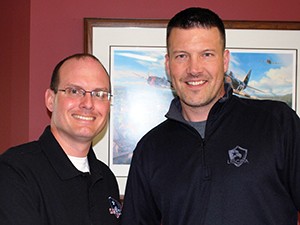 By State Representative Jesse Kremer
By State Representative Jesse Kremer
October 5, 2015, Kewaskum, Wisconsin:
Prevention and Protection on College Campuses by Rep. Jesse Kremer:
This past week, another horrific mass shooting took place in yet another “gun-free” school zone. I cannot even begin to comprehend what the parents of these victims are going through and pray that our family will never have to endure this type of pain.
Let us be completely honest – we will never be able to legislate evil into extinction. While some argue for more mental health reform, others push for tighter gun control laws and many stress an ever vigilant and armed citizenry. I will address some facets of this issue in the contexts of campus violence prevention and protection.
When considering the mental health argument for stricter gun laws, it is important to realize that in a 2004 U.S. Secret Service and U.S. Department of Education report, Implications for the Prevention of School Attacks in the United States, an analysis of 37 school shootings involving 41 attackers from years 1974 – 2000 revealed that neither diagnoses of mental health disorders nor substance abuse were prevalent among the attackers. These facts make it nearly impossible to prevent weapons from falling into troubled hands.
Among the report’s 10 major findings, three in particular stand out: first, most incidents were stopped by means other than law enforcement, second, these acts are rarely sudden or impulsive and third, others often have advanced knowledge of an attacker’s plan.
According to a CNN report on the recent shooting in Oregon, authorities have linked social media postings to the shooter, revealing a discussion of his plan, complete with both encouraging and disparaging feedback from other users.
I believe that there are two steps to the prevention of violence on and around college campuses. First, we all have a duty to notify law enforcement immediately if we become aware of any veiled or direct threat. Intense discussions on social media involving the planning of a terrorist-style attack are not normal behavior and must be taken seriously by family, friends and acquaintances.
Second, we must immediately dismantle “gun-free zones,” particularly those in our public colleges and universities. Dr. J. Eric Dietz, Director of Purdue University’s Homeland Security Institute, concluded that in a study of all mass shootings since the 1950’s only two occurred outside of gun-free zones.
The unfortunate reality of these zones on our public campuses is that they merely serve to concentrate a population of potentially disarmed individuals – a perfect target for those wishing to commit acts of sexual assault, robbery or a mass shooting. In order to prevent future campus shootings and reduce crime around our colleges, we must not only address the issue of prevention, but also personal protection.
It is clear that thugs who are bent on mayhem will not observe laws, school policies or other civil norms. As such, we cannot continue to ignore the constitutional right of self-defense by treating college adults as lesser citizens. This is, once again, a compelling argument to disband the “gun-free zone” policies that evoke a feel-good, false sense of security.
In closing, the real solution to violence prevention and personal protection on college campuses does not exist in stripping away physical weapons, but rather in the elimination of easy targets for criminals terrorizing law-abiding citizens. A responsibly armed society, keenly aware of potential threats is not something to fear. We simply cannot afford to continue ignoring the facts of these sobering situations at the expense of our vulnerable college students and faculty.